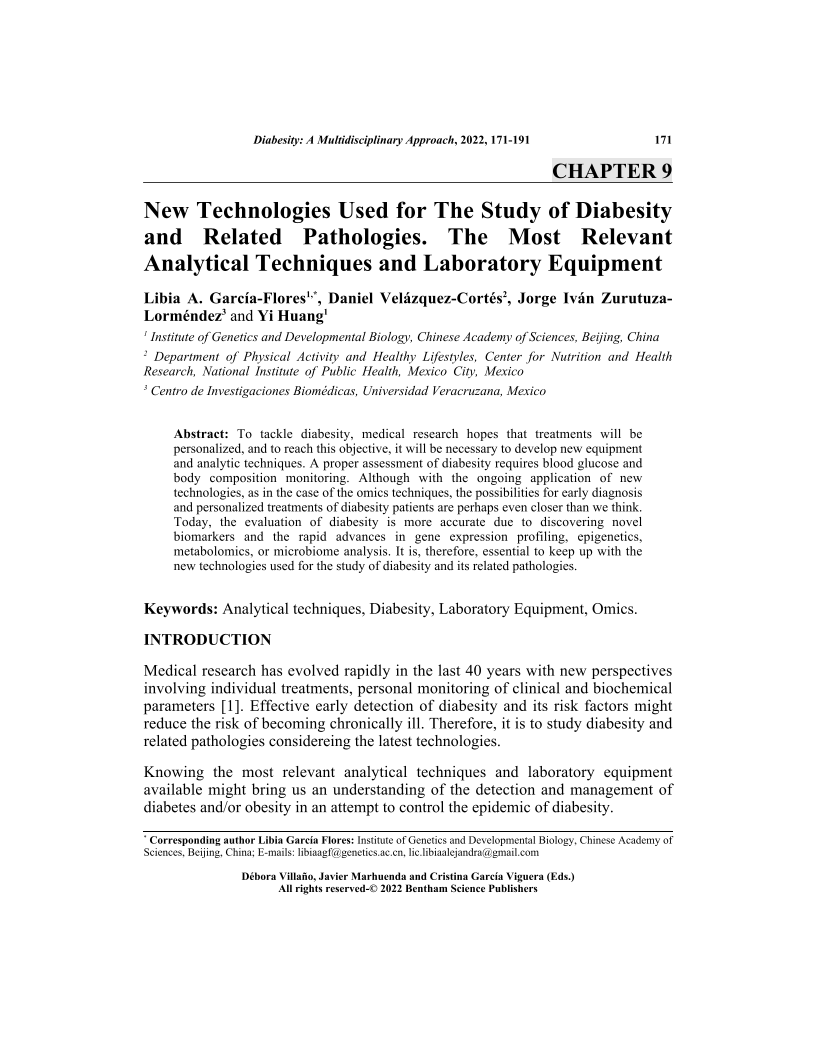New Technologies Used for The Study of Diabesity and Related Pathologies. The Most Relevant Analytical Techniques and Laboratory Equipment

- Authors: Libia A. García Flores1, Daniel Velázquez-Cortés2, Jorge Iván Zurutuza-Lorméndez3, Yi Huang4
-
View Affiliations Hide Affiliations1 Institute of Genetics and Developmental Biology, Chinese Academy of Sciences, Beijing, China 2 Department of Physical Activity and Healthy Lifestyles, Center for Nutrition and HealthResearch, National Institute of Public Health, Mexico City, Mexico 3 Centro de Investigaciones Biomédicas, Universidad Veracruzana, Mexico 4 Institute of Genetics and Developmental Biology, Chinese Academy of Sciences, Beijing, China
- Source: Diabesity: A Multidisciplinary Approach , pp 171-191
- Publication Date: April 2022
- Language: English
New Technologies Used for The Study of Diabesity and Related Pathologies. The Most Relevant Analytical Techniques and Laboratory Equipment, Page 1 of 1
< Previous page | Next page > /docserver/preview/fulltext/9789815039801/chap9-1.gif
To tackle diabesity, medical research hopes that treatments will be personalized, and to reach this objective, it will be necessary to develop new equipment and analytic techniques. A proper assessment of diabesity requires blood glucose and body composition monitoring. Although with the ongoing application of new technologies, as in the case of the omics techniques, the possibilities for early diagnosis and personalized treatments of diabesity patients are perhaps even closer than we think. Today, the evaluation of diabesity is more accurate due to discovering novel biomarkers and the rapid advances in gene expression profiling, epigenetics, metabolomics, or microbiome analysis. It is, therefore, essential to keep up with the new technologies used for the study of diabesity and its related pathologies
-
From This Site
/content/books/9789815039801.chap9dcterms_subject,pub_keyword-contentType:Journal -contentType:Figure -contentType:Table -contentType:SupplementaryData105

